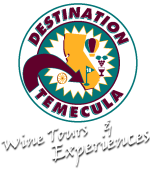Temecula History
The Temecula Valley has been inhabited by humans for more than a thousand years
Temecula History
According to historians and Temecula history buffs, the Temecula Valley has been inhabited by humans for more than a thousand years. The Temecula Indians are believed to have migrated from Shoshonean lands near the Colorado River around 900 AD.
Oral history passed down amongst the people of the local Pechanga Band of the Luiseno Mission Indians differs, telling of the union of the Sky-father and Earth-mother in this, the Temecula Valley, where for them life began. In fact, in the Luiseno’s world view, the Shoshones migrated north from here.
Legend has it that this valley was named by Nahachish, an Indian wanderer, whose life was spent traveling from place to place, naming things. Standing on a hillside viewing the vast lands below, he saw smoke rising from Indian campfires on the valley floor mixing with thick mist flowing over the western hills. Sunshine passed through this thick haze, creating diffused sunbeams.
Absorbing the scene, Nahachish proclaimed this beautiful area “Temeku”, in the language of the Luiseno, which means “place of the sun.” Pausing as he departed through the Rainbow Gap at the southern end of the valley, he gazed upon the land he named and was turned to stone, some say, by the arrow of an archer.
The year 1797 is believed to be the date missionaries first set foot in the valley. Through their Spanish tongue the name became “Temecula”, which translated, means “Land where the sun shines through the mist”.
Settled by non-Indians in the early 19th century, Kit Carson passed through in 1848, heading east to spread the word: “Gold has been discovered in California!”
Strategically located on the Southern Trail, the Butterfield Overland Mail made regular stops during the late 1850’s. Enduring weeks crossing vast deserts as they headed west, pioneers cresting the hills to the east looked upon our valley triumphantly, considering this the point at which they had arrived in “the land of promise”.
In 1904 the Vail Ranch, a cattle operation of nearly 90,000 acres, was established. It covered the southern portion of the Temecula Valley, plus the Pauba and Wolf Valleys to the east. One of the last great privately owned, unfenced parcels of land in the United States, it was purchased in 1964 by a conglomerate headed by the Kaiser Development Corporation to create a master-planned community called “Rancho California”.
In 1967, Audrey and Vincenzo Cilurzo, an Emmy-Award winning lighting director for ABC Television, purchased land in Temecula in preparation for Vince’s future retirement. The Vail family, in their infinite wisdom, had been collecting raw data for years from weather stations placed throughout their massive ranch. The Cilurzo’s commissioned the agricultural department of The University of California at Davis to study this information and recommend appropriate crops to plant on their newly acquired acreage.
Weather data revealed the Temecula Valley enjoys a wonderful microclimate created by a location sandwiched between the Salton Sea in the Anza-Borrego Desert to the east and the Pacific Ocean to the west. The Salton Sea is generally the lowest pressure area in California and it pulls air from the Pacific Ocean, a high-pressure area.
As warm air rises from the desert floor each day, it acts as a vacuum and our valley receives moisture-laden afternoon wind gusts peaking at 15-20 mph through an 18 mile gap in the western hills from the ocean, creating cool mornings and evenings which bookend intense mid-day sunshine.
Temecula’s climate was found to be similar to the Napa Valley and great wine producing regions of France with perfect conditions for cultivation of premium grapes. Thus, the Temecula Valley Wine Country was born.
The rest is, as you might say, history of Temecula.
Well over one hundred years after first settled, the city officially incorporated in 1989. A referendum was held to choose the official name: Temecula or Rancho California. The overwhelming choice is a designation used for hundreds of years, giving this town the distinction of maintaining its aboriginal Native American name longer than any other California community.
Today finds Temecula’s population surpassing 100,000 residents, with 500,000 in the greater valley. Temecula’s population will ultimately approach 150,000 residents, with around 1,000,000 in the valley.
Ponder this for a moment…When the Vail’s sold their holdings in 1964, there were just 250 residents in the entire Valley.


